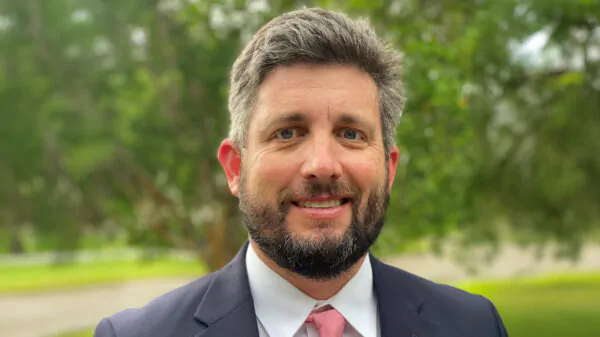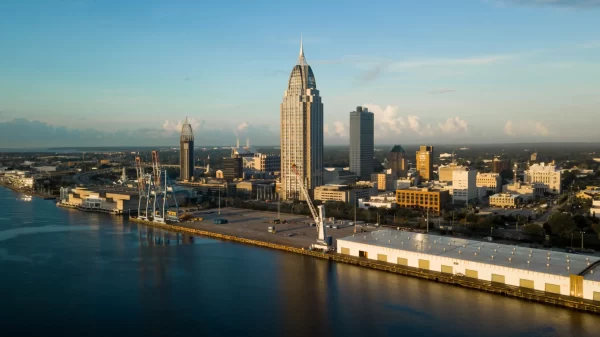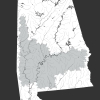By Brandon Moseley
Alabama Political Reporter
The U.S. Fish and Wildlife Service (USFWS) has approved a U.S. Army Corps of Engineers plan to cut the amount of water flowing from Woodruff Dam into the Appalachicola River from 5,000 cubic feet of water per second (CFS) to 4,500 CFS. The USFWS biological opinion released to the Corps includes an Incidental Take Statement, which provides the Corps an exemption from take under the Endangered Species Act (ESA) for harming protected species. The Corps has committed to several actions to minimize the loss of the endangered mussels. The U.S. Fish and Wildlife Service determined that the Corps of Engineer plan for operating Jim Woodruff Dam (Lake Seminole) on the Apalachicola River will not lead to the extinction of federally protected freshwater mussels and the Gulf sturgeon fish in Florida and thus granted them the exemption from the ESA.
Southeast Regional USFWS Director Cindy Dohner said, “We want to thank our Corps colleagues for working with us to balance protection of our natural resources with the myriad of users that rely on the Apalachicola-Chattahoochee-Flint River Basin from metro Atlantans to Florida oystermen. By protecting river flows for the people who depend on and enjoy the Apalachicola River and Bay, the Corps is also conserving these endemic freshwater mussels.”
This Corps’ Revised Interim Operating Plan calls for cutting the flow of water from Woodruff Dam into the Apalachicola River to as low as 4,500 CFS during an extreme drought, to allow the reservoirs to recover. Drought conditions in the ACF Basin triggered drought operations on May 1 to conserve water in upstream reservoirs including Lake Lanier in metro Atlanta. The Corps has been releasing about 5,000 CFS of water into the Apalachicola River from Woodruff since 1957.
The Corps formally set the minimum flow for Woodruff Dam at 5,000 cfs in 1989 with the draft Water Control Plan for the Apalachicola-Chattahoochee-Flint River basin. A minimum release is necessary so that stakeholders downriver will have water for their drinking water, to generate electric power, irrigate crops, fishing, and other needs.
The Apalachicola River is formed by the Chattahoochee and Flint Rivers in Georgia where they meet in Lake Seminole. Three freshwater mussel species listed under the Endangered Species Act are found in the Apalachicola River. They are the threatened purple bankclimber and Chipola slabshell, and the endangered fat threeridge mussel. The Gulf sturgeon, is listed as threatened, and spawns in the river below Woodruff Dam.
Atlanta’s growing water demand continues to affect communities downstream. Alabama and Florida have sued Georgia in federal court over Georgia’s diversion of water to support the sprawling Atlanta metro-area. As more water is taken out of the river basin it leaves much smaller flows downstream. In the drought of 2007, neighboring states threatened to sue if Georgia diverted all the water in the Apalachicola-Chattahoochee-Flint and Coosa River basins for human residential and commercial consumption leaving little water for the people and wildlife downriver. In 2007, Florida used the Endangered Species Act to attempt to keep the water flowing. Florida argues that low flows from the Apalachicola lead to increased salinity in the river as the ocean begins to flow up river, doing even more damage to the mussels.
Georgia’s lakes and reservoirs replenished in 2009 and 2010; but the winter of 2011-2012 did not see heavy enough rains to replenish Georgia’s freshwater reservoirs. The reservoirs are required to release water downstream to protect the mussels and other downriver needs. In May 2011 Lake Lanier, Lake Eufaula, Westpoint Lake, and Lake Seminole were all at full pool. In the following six months they lost half of that water to consumption and the mandatory minimum flows required to keep the riverine habitat in a somewhat functional norm. The dry winter has prevented the system from fully recharging. Lake Lanier and Westpoint Lake were five feet below pool at the end of April. Unless this summer is unusually wet in Georgia it is possible that late this summer could see a repeat of the 2007 drought crisis.
In 2009, U.S. District Judge Paul Magnuson ordered Georgia to stop draining Lake Lanier for its drinking water and gave them until July 2012 to comply or they would have to revert to 1975 levels of water withdrawal. The 11th Circuit Court of Appeals later overturned that ruling and extended the deadline another year and has given Alabama, Georgia, and Florida more time to reach an agreement on the Water wars issue that doesn’t seem to go away. Efforts to build new reservoirs for the City of Atlanta are still many years away from completion.






















































